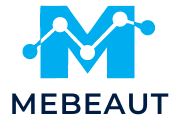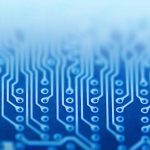Education is an ever-evolving landscape. With the rapid advances in technology and the increasing diversity of student populations, traditional educational methods are continually being challenged and reimagined. One of the latest trends reshaping higher education is the rise of personalized learning environments. These innovative approaches to teaching and learning put the individual learner at the center, providing students with tailored educational experiences that address their unique strengths, weaknesses, interests, and learning styles. But how can these personalized learning environments actually improve student outcomes in higher education? Let’s have a deeper look.
The Role of Personalization in Education
Before we delve into the specific impacts of personalization, it is important to understand what personalized learning environments are and what they entail. Personalization in education is not a new concept. However, with the advent of technology and data analytics, it has taken on a new form and dimension.
Also read : What’s the Potential of Smart Glasses in Transforming Field Service Industries?
Personalized learning environments are marked by a shift away from the traditional, one-size-fits-all model of education. They strive to create a learning experience that is tailored to the individual needs, preferences, and goals of each student. This can involve adjusting the pace of learning, offering flexible learning paths, providing different types of content and resources, and using data to provide real-time feedback and support.
Improving Engagement and Motivation
One of the primary ways in which personalized learning environments can enhance student outcomes is by boosting engagement and motivation. When learning is aligned with a student’s interests and abilities, it is more likely to captivate their attention and drive their curiosity.
Have you seen this : What Are the Best Practices for Supporting Neurodiversity in the UK Workforce?
Research suggests that students who learn in personalized environments are more engaged in their studies and are more motivated to learn. This comes as no surprise when you consider that personalized learning often involves giving students a certain degree of autonomy and control over their learning. This sense of ownership can significantly increase their motivation and drive, leading to better learning outcomes.
Facilitating Deeper Learning
Personalized learning environments do not merely focus on helping students absorb information. Rather, they aim to foster deeper learning by encouraging students to think critically, apply their knowledge, and develop a strong understanding of the concepts they study.
In a personalized learning environment, students are often given open-ended tasks and projects that require them to apply their knowledge in different contexts and situations. This promotes deeper understanding and helps students develop skills such as problem-solving, critical thinking, and creativity.
Moreover, personalized learning environments often make use of technology and digital tools that allow for interactive and immersive learning experiences. This can further facilitate deeper learning by making the learning process more engaging and dynamic.
Promoting Persistence and Retention
Another major benefit of personalized learning environments is their potential to improve student persistence and retention. By allowing students to learn at their own pace and in their own way, personalized learning environments can help reduce the risk of students feeling overwhelmed or falling behind in their studies.
Studies have shown that students who learn in a personalized environment are less likely to drop out of their courses and more likely to complete their degree programs. This is likely due to the fact that personalized learning environments can provide students with the support and flexibility they need to overcome challenges and stay on track with their learning.
Enhancing Skill Development
Personalized learning environments are not only beneficial for academic success, but they can also contribute significantly to skill development. By emphasizing student autonomy and active learning, personalized environments can help students develop a wide range of skills that are crucial for the 21st century.
These skills include self-directed learning, problem-solving, critical thinking, creativity, and digital literacy. Furthermore, because personalized learning often involves collaboration and project-based learning, it can also foster skills such as teamwork, communication, and leadership. These skills can greatly enhance a student’s employability and preparedness for the future workforce.
In summary, personalized learning environments are a promising approach to enhancing student outcomes in higher education. By boosting engagement, facilitating deeper learning, promoting persistence, and enhancing skill development, these environments can help students thrive acadically and beyond. As higher education continues to evolve, it will be important to further explore and capitalize on the potential of personalized learning.
The Integration of Technology in Personalized Learning Environments
In the digital age, technology plays a crucial role in the implementation of personalized learning environments. It’s through the use of sophisticated software and applications that educators can effectively tailor their teaching methods to suit the unique needs and preferences of each student. Educational technology (EdTech) has revolutionized the way personalized learning environments function, thereby enhancing the overall student experience.
EdTech includes various tools such as learning management systems (LMS), virtual reality (VR), and artificial intelligence (AI). An LMS, for instance, enables educators to create flexible learning paths, deliver diverse content, and track student progress in real-time. With VR, students can engage in immersive experiences, making their learning more interactive and engaging. AI, on the other hand, helps in predicting student performance, providing personalized feedback, and customizing learning materials.
Furthermore, technology enables the implementation of data-driven strategies in education. Through the collection and analysis of data, educators can gain insights into student behavior, performance, and learning styles. This way, they can adjust their teaching methods accordingly and provide real-time support to students. With predictive analytics, they can also identify potential problems early on and intervene before students fall behind.
While integrating technology into personalized learning environments comes with its challenges – such as ensuring data privacy and addressing the digital divide – its benefits are undeniable. By leveraging technology, educators can create a dynamic, responsive, and engaging learning environment that caters to each student’s unique needs.
The Future of Personalized Learning Environments in Higher Education
Personalized learning environments have shown immense potential in improving student outcomes in higher education. However, they are still a relatively new phenomenon, and much work remains to be done to fully harness their potential.
In the future, we can anticipate more advanced and sophisticated personalized learning environments enabled by emerging technologies like AI and machine learning. These technologies could further enhance the personalization of learning by providing more accurate predictions of student performance and offering more targeted support.
Moreover, as educators gain more experience and expertise in personalized teaching, best practices and strategies will likely evolve and mature. This could lead to more effective and efficient personalized learning environments that deliver even better outcomes for students.
Lastly, as more research is conducted on personalized learning, we can expect a more robust evidence base to emerge. This can help dispel any remaining skepticism about the effectiveness of personalized learning and encourage more widespread adoption in higher education.
To conclude, personalized learning environments hold great promise for the future of higher education. They have the potential to transform education from a one-size-fits-all model to a truly individualized experience, enhancing student outcomes in the process. As we continue to explore and innovate in this area, the future of higher education looks bright indeed.








